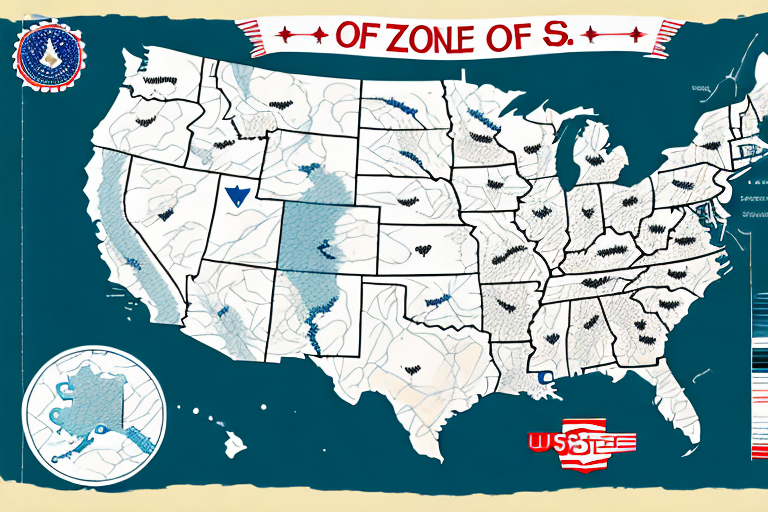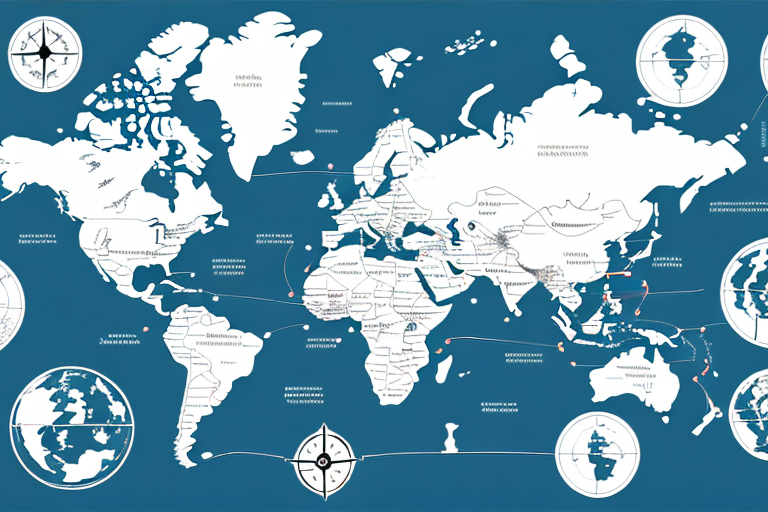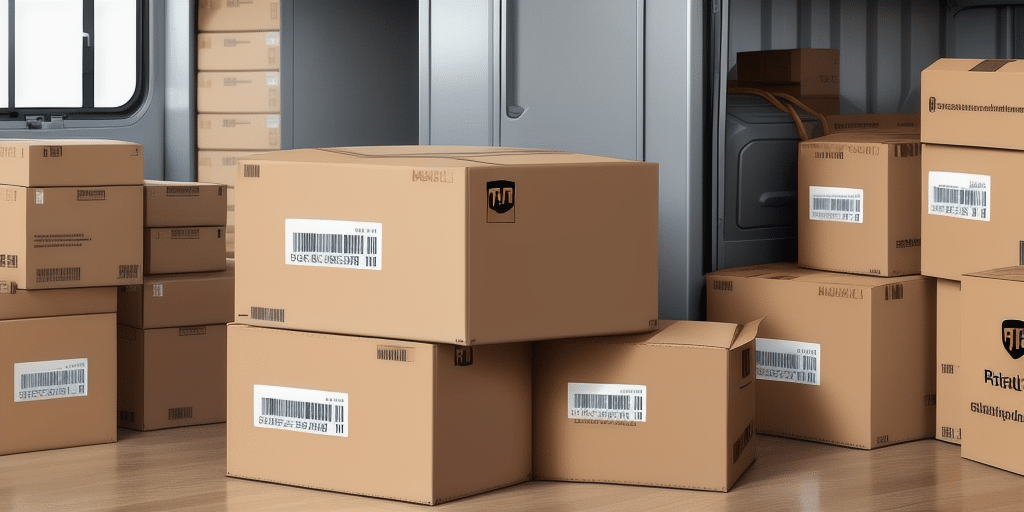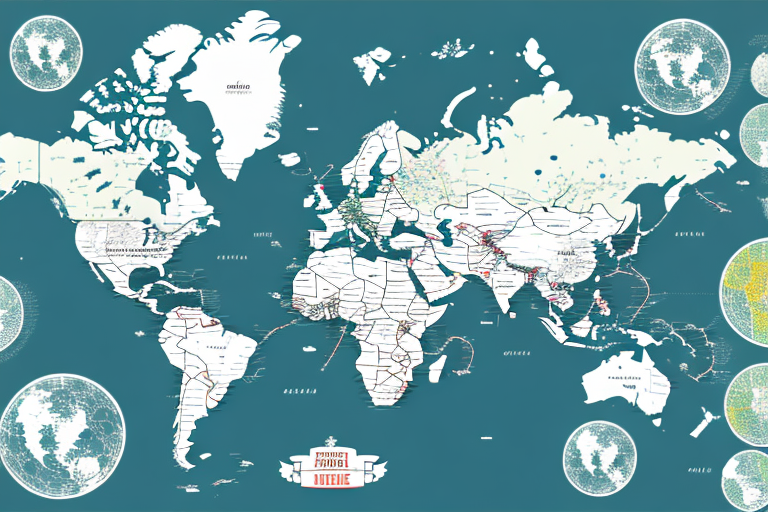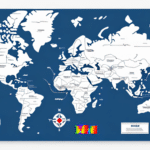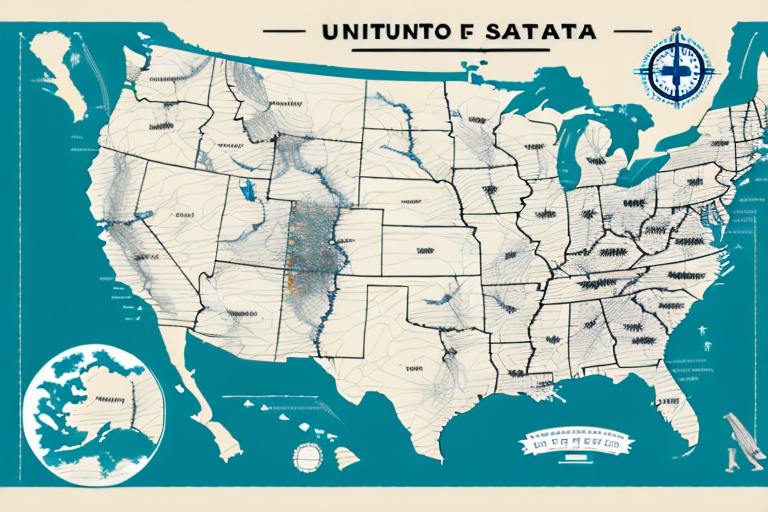Understanding the USPS Zone Map for Efficient Shipping
The USPS Zone Map is an essential tool for businesses that need to ship products or mail. It serves as a reference to determine delivery times and shipping costs for items sent within the United States.
What is the USPS Zone Map and How Does It Work?
The USPS Zone Map is a geographical tool created by the United States Postal Service (USPS). The United States is divided into nine zones based on the distance from the origin point. The zone number of a destination determines both the speed of delivery and the shipping cost. Higher zone numbers indicate longer distances, resulting in higher costs and longer delivery times.
Businesses use the USPS Zone Map to identify the most cost-effective and efficient shipping methods for their products. By leveraging the map, companies can optimize their shipping strategies, reduce costs, and enhance customer satisfaction through timely deliveries.
The Evolution of the USPS Zone Map
Since its introduction, the USPS Zone Map has undergone several significant changes to improve efficiency and accuracy:
- 1948: The USPS introduced the Zone Map to streamline mail and package delivery amidst growing mail volumes and expanding transportation networks.
- 1963: The number of zones was standardized to nine, allowing for more precise pricing and delivery estimates.
- 1991: The Zone Map system was computerized, enhancing the accuracy of delivery time and cost calculations and facilitating real-time package tracking.
- 2023: The USPS continues to update the Zone Map annually to reflect changes in transportation routes and infrastructure, ensuring ongoing reliability and efficiency.
How to Read the USPS Zone Map
Reading the USPS Zone Map involves a few straightforward steps:
- Identify the Origin ZIP Code: Locate the ZIP code from which the package is being sent.
- Find the Destination ZIP Code: Locate the recipient's ZIP code on the map.
- Determine the Zone: The map will indicate a zone number (1-9) based on the distance between the origin and destination.
- Calculate Shipping Costs: Use the zone number in conjunction with the package's weight and shipping class to determine the shipping cost.
The USPS also offers an online Zone Lookup tool that simplifies this process by allowing users to input origin and destination ZIP codes to quickly find the corresponding zone.
Why Understanding the USPS Zone Map is Crucial for Businesses
For businesses, comprehending the USPS Zone Map is vital for several reasons:
- Accurate Cost Calculation: Properly calculating shipping costs helps in setting competitive pricing and maintaining profit margins.
- Efficient Shipping Strategies: Identifying the optimal shipping routes and methods based on zone information can reduce delivery times.
- Enhanced Customer Satisfaction: Providing accurate delivery estimates and reliable shipping increases customer trust and loyalty.
- Cost Savings: Understanding zone-based pricing allows businesses to choose the most economical shipping options, especially for high-volume shipments.
Tips for Using the USPS Zone Map to Save on Shipping Costs
Implementing the following strategies can help businesses minimize shipping expenses:
- Zone Skipping: Ship packages directly to higher zones to bypass intermediate zones, reducing the overall shipping cost.
- Utilize Flat Rate Boxes: USPS Flat Rate boxes offer a fixed price regardless of weight (up to a certain limit), which can be cost-effective for heavier items.
- Leverage Volume Discounts: High-volume shippers can negotiate discounted rates with USPS, leading to significant savings.
- Package Optimization: Properly package items to minimize size and weight, avoiding unnecessary surcharges.
- Compare Shipping Services: Evaluate different USPS services (e.g., Priority Mail, First-Class Mail) to find the best balance between cost and delivery speed.
USPS Shipping Services Available for Each Zone
The USPS offers a variety of shipping services tailored to different needs and zones:
- Priority Mail: Delivers within 1-3 business days across all zones, offering reliable and expedited shipping.
- First-Class Mail: Ideal for lightweight packages (up to 13 ounces), delivering within 1-3 business days.
- Parcel Select: An economical option for large or non-urgent packages, with delivery times ranging from 2-8 business days.
- Priority Mail Express: USPS's fastest service, guaranteeing overnight delivery to most locations with tracking and insurance.
For international shipping, services include:
- Priority Mail International: Ships to over 190 countries with delivery typically in 6-10 business days.
- First-Class Package International Service: A cost-effective option for packages up to 4 pounds.
- Global Express Guaranteed: Provides the fastest international shipping with delivery in 1-3 business days to major destinations.
Calculating Shipping Costs with the USPS Zone Map
To accurately calculate shipping costs using the USPS Zone Map:
- Determine the Zone: Use the USPS Zone Lookup tool to find the zone number based on origin and destination ZIP codes.
- Identify the Shipping Class: Based on the package's weight and dimensions, determine the appropriate shipping class.
- Use the USPS Postage Calculator: Input the zone number, shipping class, and package details into the USPS Postage Calculator to obtain the shipping cost.
Businesses can also integrate shipping software that automates these calculations, ensuring accuracy and saving time.
Impact of Distance and Time on Delivery Speeds Based on Zones
Distance and time are pivotal factors influencing delivery speeds:
- Zone Number: Higher zones represent greater distances, leading to longer delivery times.
- Shipping Method: Services like Priority Mail offer faster delivery compared to Parcel Select.
- Transportation Mode: Air transport speeds up delivery but may increase costs compared to ground transport.
- External Factors: Weather conditions and natural disasters can cause unforeseen delays, impacting delivery schedules.
Understanding these factors helps businesses set realistic delivery expectations and choose the appropriate shipping services.
Common Mistakes to Avoid When Using the USPS Zone Map
To maximize the benefits of the USPS Zone Map, businesses should avoid the following common errors:
- Incorrect ZIP Codes: Entering wrong origin or destination ZIP codes can result in inaccurate zone determination, leading to incorrect shipping costs.
- Ignoring Package Specifications: Failing to account for package weight and size can result in selecting inappropriate shipping classes and unexpected fees.
- Overlooking Zone Updates: The USPS Zone Map is updated regularly; not staying informed can lead to outdated shipping information.
- Neglecting Shipping Service Comparison: Not comparing different USPS services may cause businesses to miss out on more cost-effective or faster shipping options.
By being mindful of these pitfalls, businesses can enhance their shipping accuracy and efficiency.
Conclusion
Understanding and effectively utilizing the USPS Zone Map is crucial for businesses that depend on shipping products or mail. By accurately reading the map, calculating shipping costs, and selecting the appropriate shipping services, businesses can optimize their logistics, reduce expenses, and improve customer satisfaction.
To stay competitive, businesses should regularly check for updates to the USPS Zone Map and consider using shipping software or consulting with shipping experts to ensure they are leveraging the most efficient and cost-effective shipping strategies.















